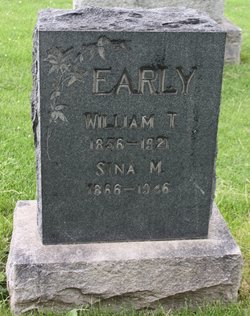By Jo Madonna, E.A. | January 3, 2020
Thousands of people lose personal data and millions of dollars to tax scams each year, despite the IRS publishing its ‘Dirty Dozen’ list of top scams year after year. The IRS encourages Americans to remain ever vigilant and to become aware of the scams and tactics used in order to protect personal information. While scammers are active year-round, certain activities peak around tax-filing season.
How Scammers Initiate Contact
- Scammers use regular mail, telephone, email, or social media.
- While tax scams take many shapes and forms, many IRS impersonators use threats to intimidate and bully people into paying a fabricated tax bill. They may even threaten to arrest or deport their would-be victim if the victim doesn’t comply.
- For a list of recent tax scams, you can visit https://www.irs.gov/newsroom/tax-scams-consumer-alerts.
How the IRS Will Never Initiate Contact
Unlike scammers, the IRS doesn’t initiate contact with taxpayers by email, text messages, or social media channels to request personal or financial information.
The IRS will never:
- Call to demand immediate payment through a specific payment method. (Scammers often propose using a prepaid debit card, gift card, or wire transfer.)
- Demand payment of taxes without allowing you to question or appeal the amount they claim you owe.
- Threaten to have you arrested by local police, immigration officers, or other law-enforcement for non-payment of taxes. Nor can they revoke your driver’s license, business licenses, or immigration status.
These are all tactics used by scammers to intimidate you into falling for one of their tax scams.
How the IRS May Contact You
The IRS uses the U.S. Postal Service as its primary means of contacting you. Before any other contact, the IRS will have mailed a bill to anyone who legitimately owes taxes.
Under certain circumstances, the IRS may call or come to your home or place of business. However, they will never demand payment. If they call, they will provide you with an official IRS number where you can call them back. If a caller refuses to give you a contact phone number, that is a good indication that you are dealing with a scammer.
If you do receive a visit from an IRS representative, you have every right to request to see official identification. A legitimate agent will provide you with two forms of ID.
The first will be a pocket commission. This is a red leather folder with the IRS seal embossed in gold on the outside, and the words “United States Treasury Department, Internal Revenue Service.” Two inserts are attached inside and include the representative’s printed legal name and job title, plus issuing information and the representative’s photo and signature.
The other ID will be an HSPD-12 card, which is a government-issued smart card that verifies the identity of Federal employees. You can ask the representative for the IRS phone number used to verify the information on the HSPD-12 card and confirm the representative’s identity.
If you are comfortable after examining both forms of ID, you can speak with them about your case. Again, though, remember they cannot demand payment immediately.
How to Make Payments to the IRS
If you do owe taxes, the IRS instructs taxpayers to make out payments to the “United States Treasury.” Specific guidelines on how to make tax payments can be found at irs.gov/payments.
Third-Party Collections
The IRS has contracted with four private collection agencies to collect on the tax debt. They are CBE, ConServe, Performant, and Pioneer. First, the IRS will write to you to let you know your overdue tax account was assigned to such an agency. The letter will provide the name and contact information of the agency assigned to your account. Then the private agency will write to you giving details on how to resolve your tax issue.
Both letters provide a Taxpayer Authentication Number linked to your identity. You can also use this number to check that any caller is legitimate, as a scammer will not have it.
Know Who to Contact
If you have any trepidation that someone is trying to scam you, make sure that you do not give any personal information. You can always contact someone directly at the IRS to confirm any questions that you may have. Your tax professional should also be able to determine the legitimacy of the notice or call.
Here are some Federal Government agencies you can contact to report different types of scams:
- Contact the Treasury Inspector General for Tax Administration to report a phone scam. Use their “IRS Impersonation Scam Reporting” web page. You can also call 800-366-4484.
- Report phone scams to the Federal Trade Commission. Use the “FTC Complaint Assistant” on FTC.gov. Please add “IRS Telephone Scam” in the notes.
- Report an unsolicited email claiming to be from the IRS, or an IRS-related component like the Electronic Federal Tax Payment System, to the IRS at phishing@irs.gov.
Lastly, should you have monetary losses related to an IRS incident, report it to the Treasury Inspector General Administration (TIGTA). Also, file a complaint with the Federal Trade Commission (FTC) using their Complaint Assistant, so your information becomes available to investigators.









